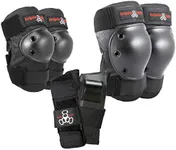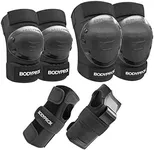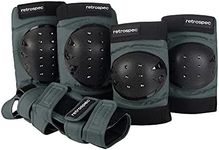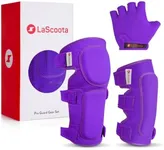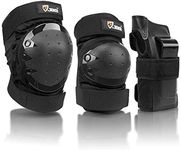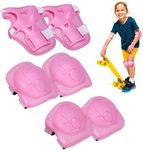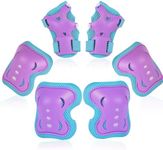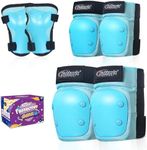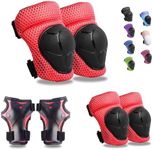Buying Guide for the Best Skateboarding Knee Pads
When it comes to skateboarding, safety should always be a top priority. One of the most important pieces of safety gear you can invest in is a good pair of knee pads. Knee pads protect your knees from impacts and abrasions, which are common when you fall or slide out during tricks. Choosing the right knee pads involves considering several key specifications to ensure they provide the best protection and comfort for your needs.Padding ThicknessPadding thickness refers to the amount of cushioning material in the knee pad. This is important because thicker padding generally offers better shock absorption, which can protect your knees from hard impacts. Knee pads with thicker padding (around 1 inch or more) are ideal for high-impact activities like vert skating or aggressive street skating. Thinner padding (less than 1 inch) may be sufficient for casual cruising or longboarding, where falls are less frequent and less severe. Choose the padding thickness based on the type of skateboarding you do and the level of protection you need.
Fit and SizeThe fit and size of knee pads are crucial for both comfort and effectiveness. Knee pads that are too tight can restrict movement and cause discomfort, while those that are too loose may shift during a fall and fail to protect your knees. Most brands offer sizing charts based on your knee circumference, so measure your knees and refer to these charts to find the right size. Additionally, consider adjustable straps or elastic bands that can help you achieve a snug fit. A well-fitted knee pad will stay in place and provide consistent protection.
Material and DurabilityThe material of the knee pads affects both their durability and comfort. Common materials include neoprene, EVA foam, and hard plastic caps. Neoprene is flexible and comfortable, making it a good choice for the inner lining. EVA foam provides excellent cushioning and shock absorption. Hard plastic caps are essential for high-impact protection, as they help distribute the force of a fall. If you skate frequently or perform aggressive tricks, look for knee pads with durable materials that can withstand repeated impacts and abrasions. For casual skaters, lighter materials may suffice.
BreathabilityBreathability refers to how well the knee pads allow air to circulate, which can affect your comfort during long skate sessions. Knee pads with breathable materials or ventilation holes can help reduce sweating and keep your knees cool. This is particularly important if you skate in warm climates or for extended periods. If you tend to get hot and sweaty while skating, prioritize knee pads with good breathability to enhance your comfort.
Flexibility and MobilityFlexibility and mobility are important for maintaining a full range of motion while wearing knee pads. Some knee pads are designed with articulated joints or flexible materials that allow you to bend and move your knees freely. This is especially important for performing tricks and maneuvers that require agility. If you prioritize performance and need to move without restriction, look for knee pads that offer high flexibility. For more casual skating, standard knee pads with moderate flexibility may be sufficient.
